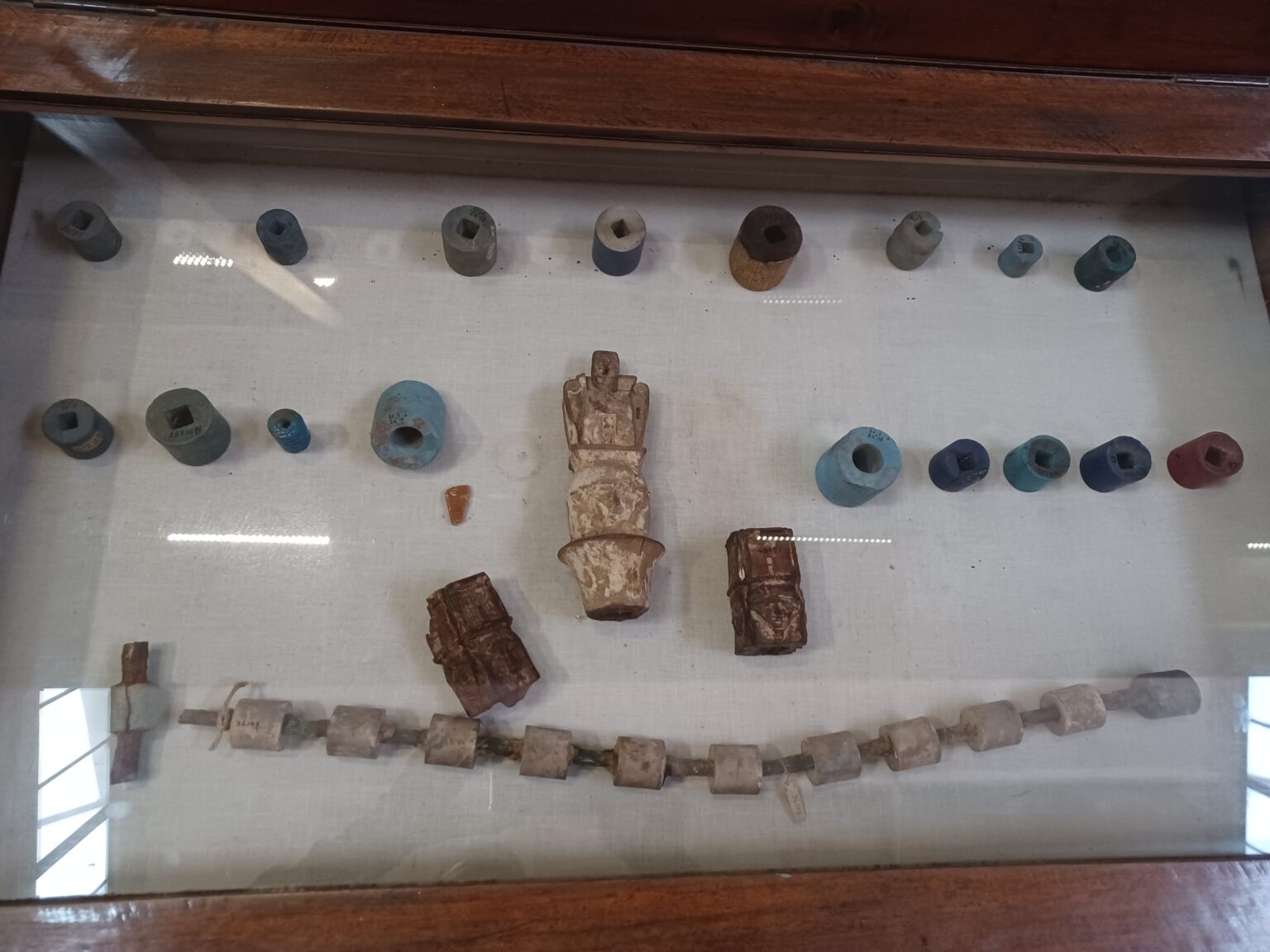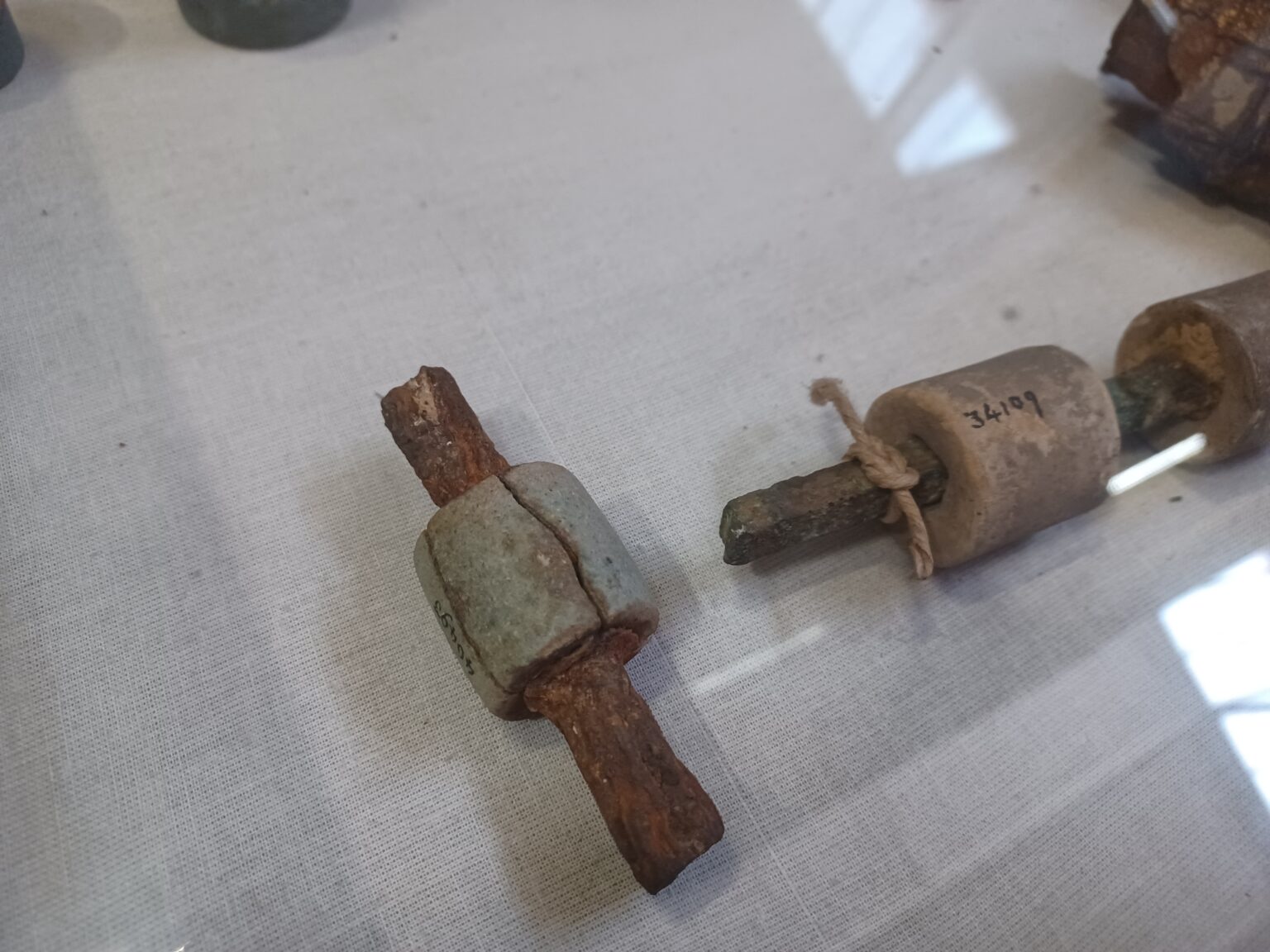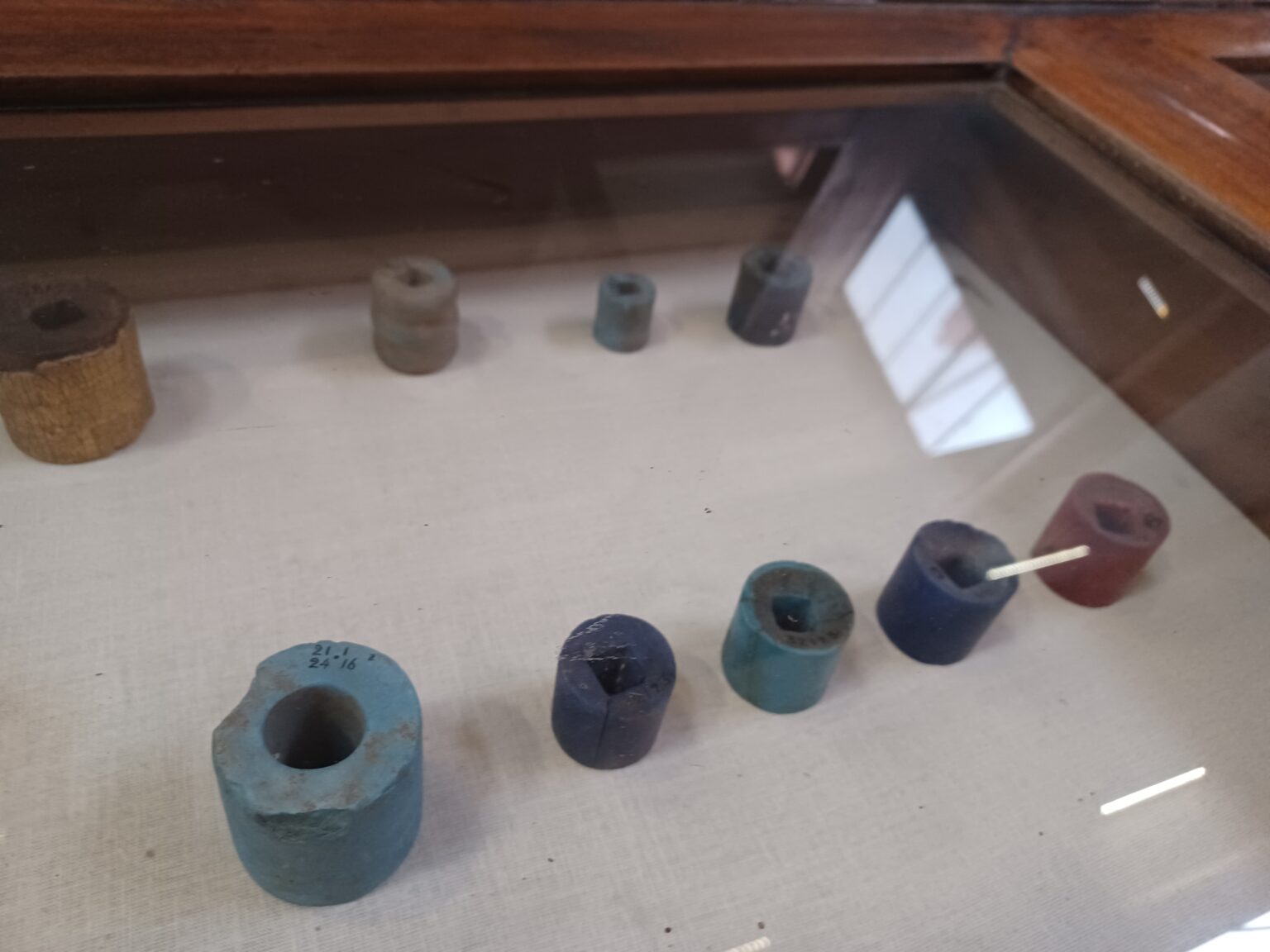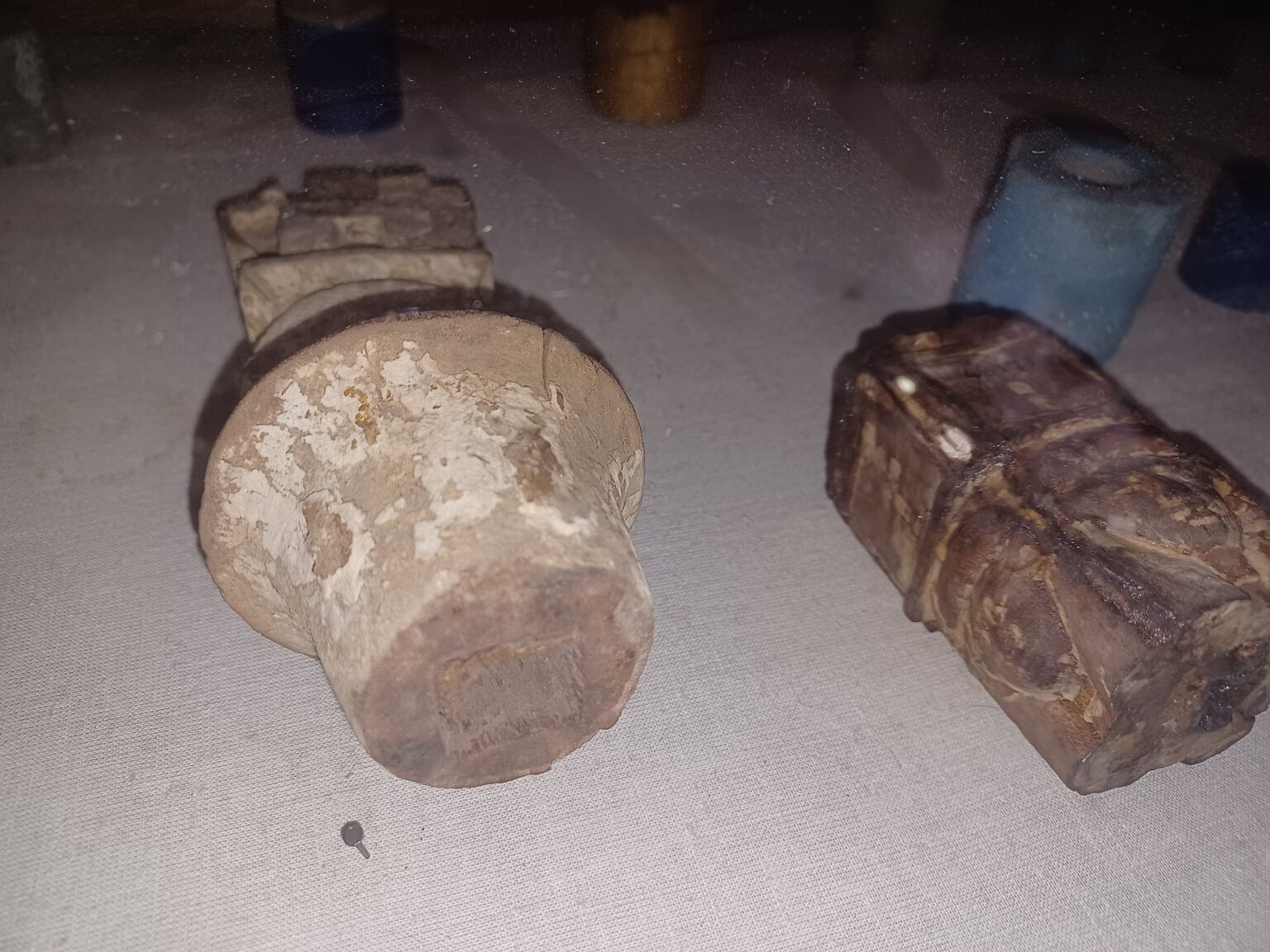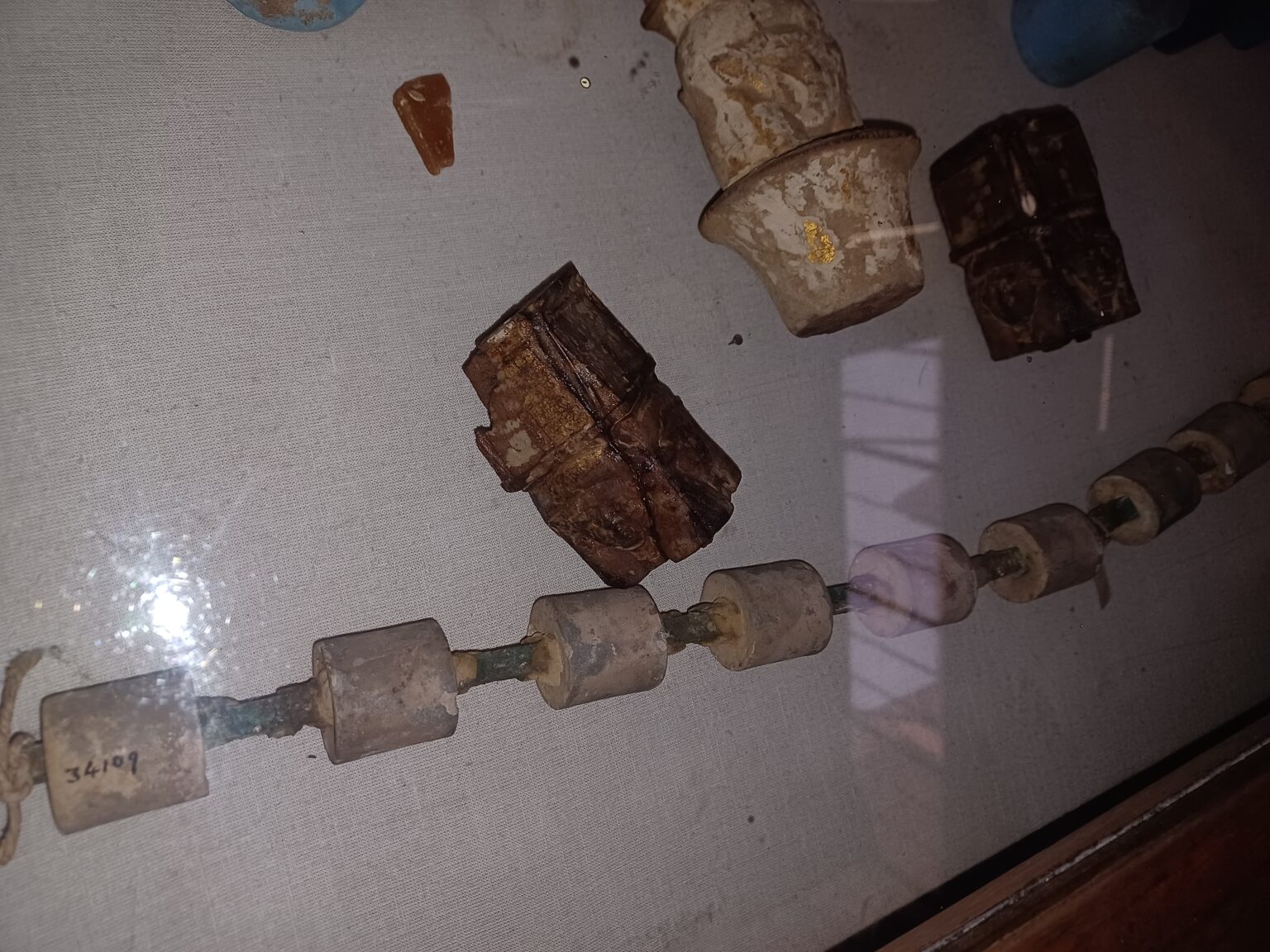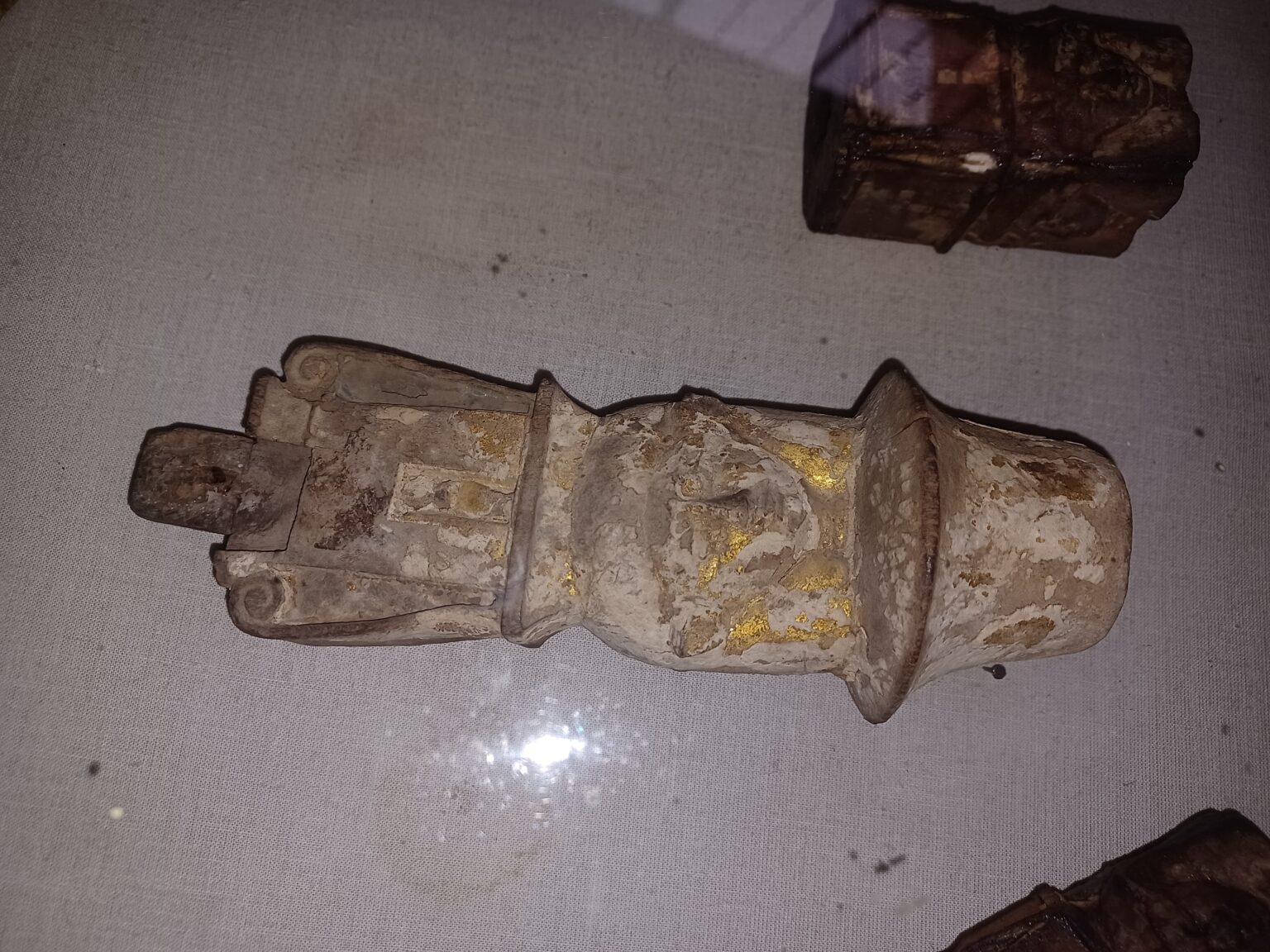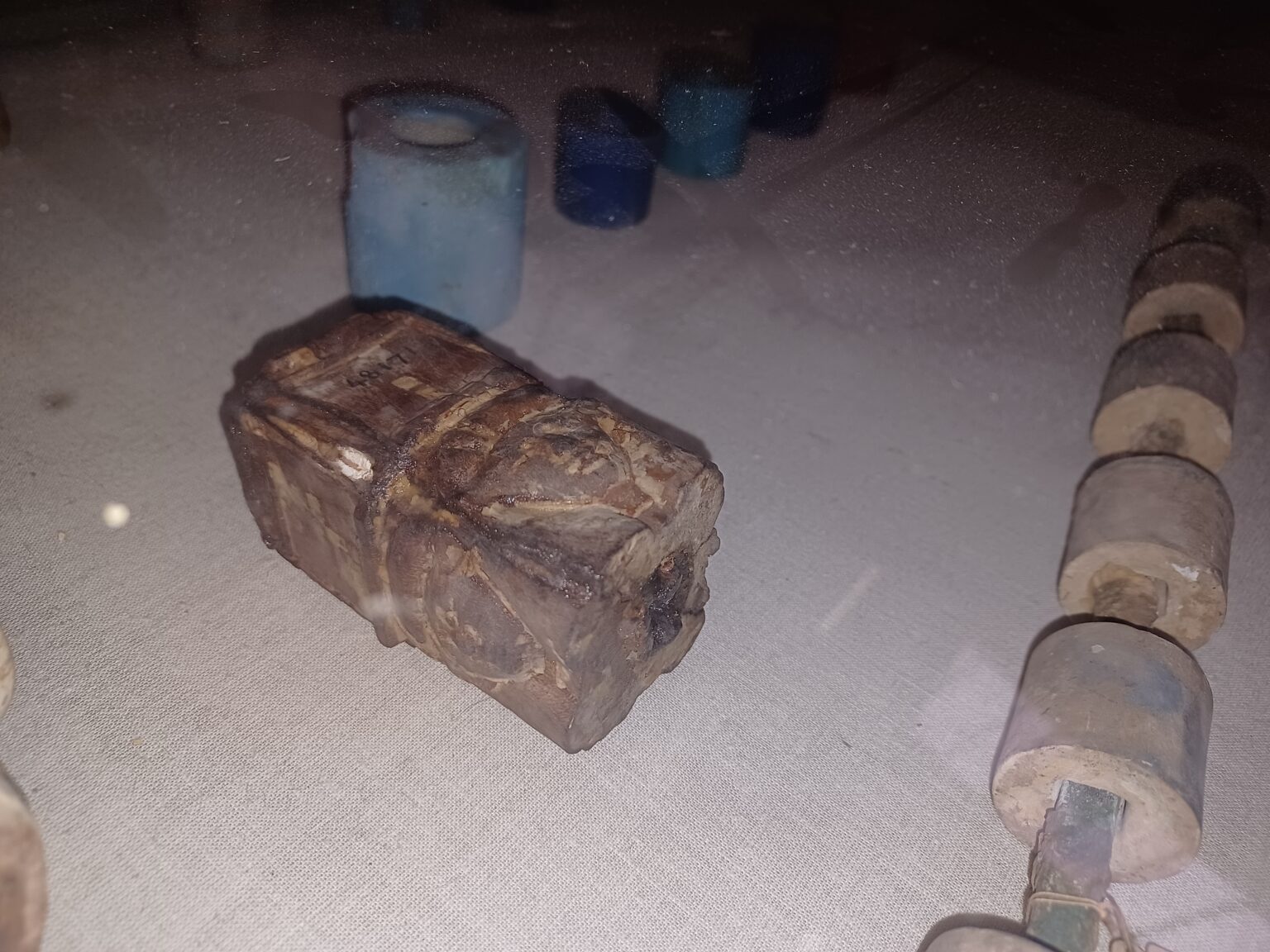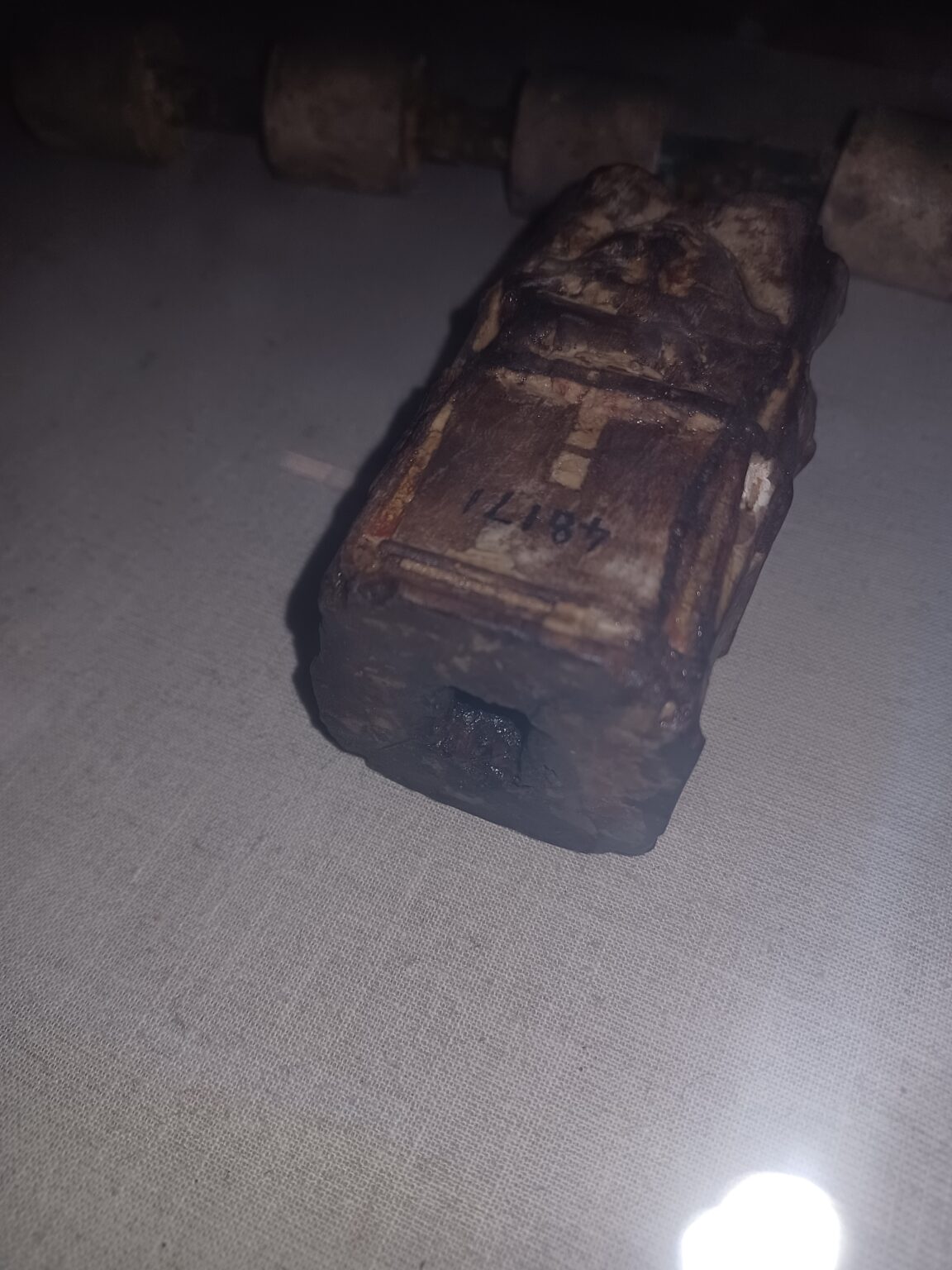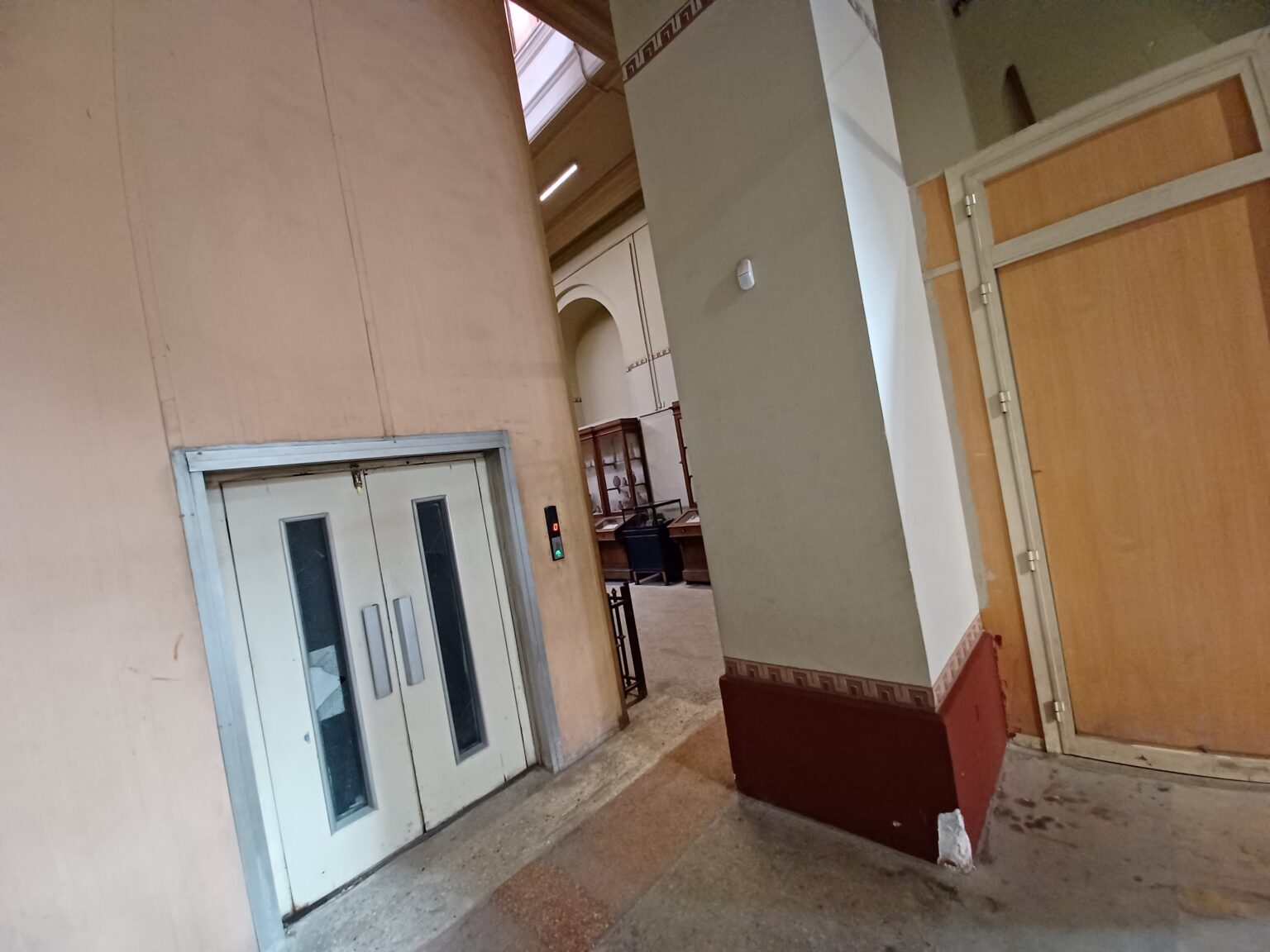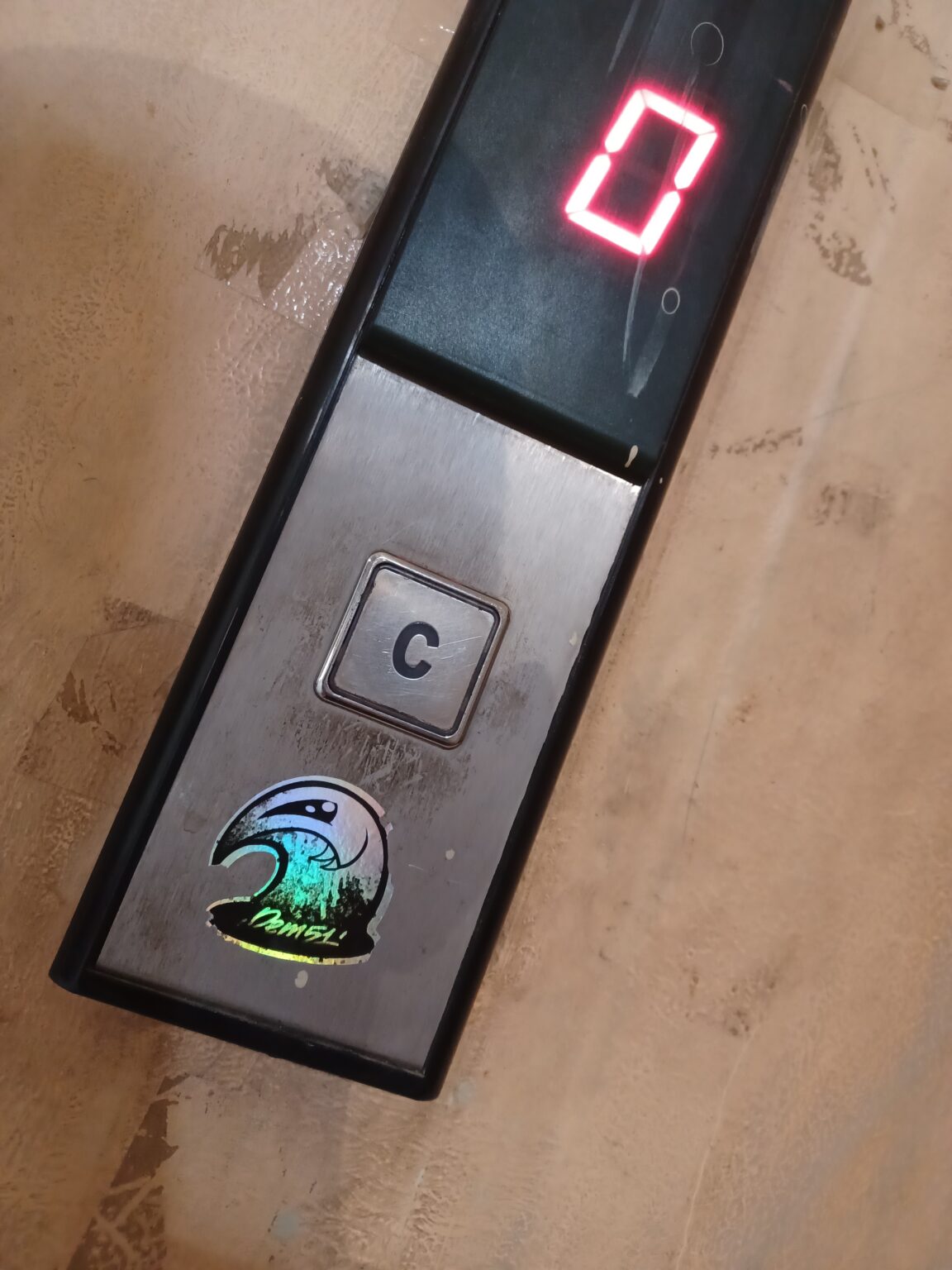i visited Egypt last March, my main reason was to explore the crypts at the temple of HatHor in Dendera which appear to depict ancient technology.
when previously searching for info, i discovered old thunderbolts (v2) threads such as: https://www.thunderbolts.info/wp/forum/ ... hp?t=14651 ... but it seems the artefacts i located were not known/revealed at that time, and i can't find this anywhere online.
i would like to share what i discovered, my photos and videos... in particular it seems no one else has posted about/found the artefacts i was lucky enough to find, and i want to contribute and seek technical input from people here
in particular, technical input similar to the old V2 forum post i linked above would be highly appreciated!... on the cylinders? equidistantly spaced, and different types not on the displayed rods (different materials? experimenting? different cylinders for different uses/parts? ... and the rods/cables and terminals: iron for one type of cable/copper for another? different terminals for what? (thanks in advance)
1. artefacts in cairo museum (el-tahrir square) in a cabinet With No Description (copper and iron rod/wire surrounded by equidistant cylinders, placed together with what appear to be terminals anthropomorphised as the heads of hathor, and other assorted cylinders
(skip to the bottom for more photos of these, and check out the video)
note: i have emailed the museum and the department of antiquities asking for info on these but they have not replied ...

2. lesser-known 2nd mural of the so-called " *menat necklace*(
keep in mind the only other instance of this device mural is in the crypt which depicts the so-called "dendera lightbulb"
*the "menat necklace" is the thing in the crypts which looks like 4 electrical cells with wires coming out, with heads of hathor on each.


regarding the unlabeled artefacts
i recorded a video of the artefacts in the museum (note how a museum guide with a group walks straight past them, totally ignores them
https://www.youtube.com/watch?v=NZhccFtjgwg
things i noticed:
1. the iron & copper rods are rusted/oxidised... possibly a sign of contact with fluids (not unlike baghdad/parthian battery/electrochemical cells level of tech)... but could be from general exposure and time.
2. the cabinet has no description (most other cabinets have plaques/bits of text, explaining what they believe we are looking at, and dating)
3. the top shelf of this same cabinet has been placed artefacts of 1 left eye and 1 right eye, and what appears to be a scarab in the middle of the eyes 4. One cabinet which stands two places to the left, and one cabinet two spaces to the right, are totally empty, and extend upon the symmetry of the unlabeled centrepiece, despite the museum owning tens of thousands of artefacts not on display... they chose to leave them empty.
5. the room/section they are displayed had no general sign on the wall explaining which collection/theme (looks as if it had been pulled off in fact)
6. the room is the one with the elevator, and the floor below had a clutter of various objects, not for public browsing
7. the room also displays copper/metal statues, some with descriptions, some not (i believe some may have been electrified in the ancient past)
8. they have selected to place these objects together, neatly and with much symmetry.
9. they are placed together because they should form a complete system (possibly with other parts not on display or looted/lost)
... (hey it's a menat necklace... right ...???
i believe these artefacts may be archaelogical evidence of what is depicted in the mural: something to be assembled into a working electrical device, or part of one.
what i derive from the arrangement: they have placed them in a cabinet with no description, with 2 eyes at the top. we are being told to look at this, and figure it out, they omit a description (well it's not a necklace is it?
regarding the lesser-known version of the mural
it differs very slightly to the only other, more widely known version (in one of the crypts) note some small differences
in particular, the mural in the crypt shows the "cables" as many small circles, connected, emerging from the hathor terminals
in contrast, the mural in one of the chambers above shows a series of Cylinders around the "cables"
here is the widely-known version in the crypt, the same crypt which shows the so-called "dendera lightbulb":
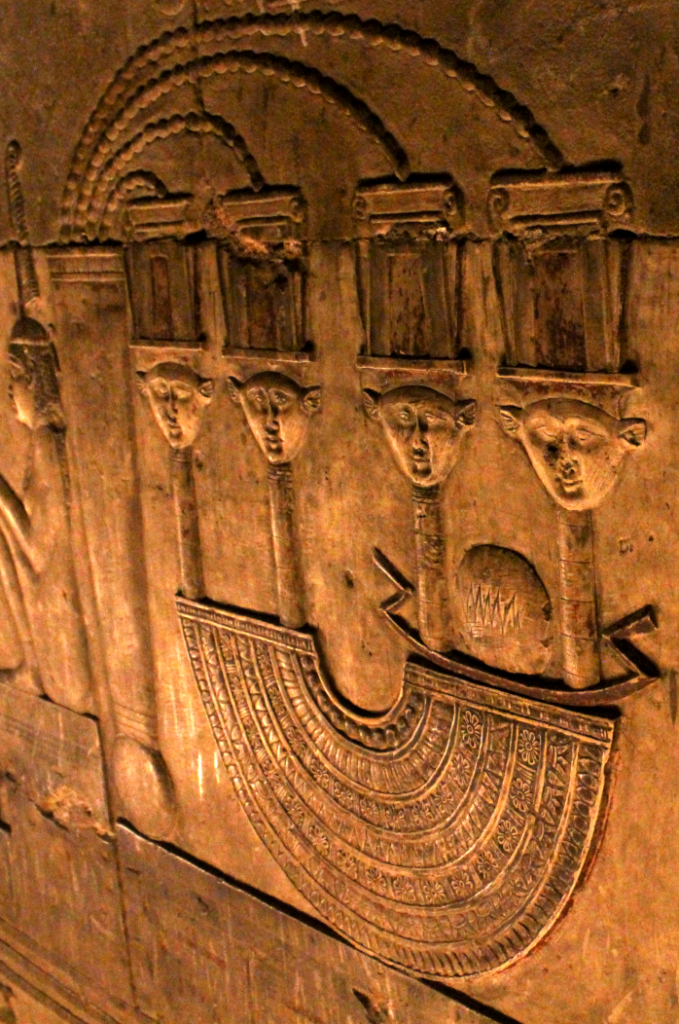
spot the difference to this one, clearly there are a series of cylinders, and it is the only other version of the mural in the entire place (it was difficult to get a photo as it is very high up in one of the chambers, easy to miss):

so we have 2 murals depicting a device:
heads of hathor with "cables" emerging, (similar to parthian batteries/cells?)
the lesser-known upper chamber mural depicts cylinders around the cables
we have unlabeled artefacts showing rusted iron & copper rods/cables with equidistant-spaced cylinders surrounding them, placed next to objects that appear to be terminals, with holes where the cable fits, styled as the heads of hathor (anthropomorphised to say it is a LIVE system
what is it?
Regarding The Crypts Which Contain The Key Encrypted Information And Once Housed The "Ritual Objects"/Machinations:
these crypts at the temple of hathor in dendera were not tombs.
these crypts which depict the hathor head & cables device, and the so-called dendera lightbulb
they were crypts which held "ritual objects"/machinations, and murals of encrypted information
to be accessed and used only by the secret initiates, not the lay people.
this is verifiable by reading the hieroglyphs (what is left...)

Wolfgang Waitkus: “Die Texte in den Unteren Krypten des Hathortempels von Dendera” (Crypt East 1 A East Wall)
dendera HatHor crypt text: (“[Come] in peace, In-Secret-Initiate of holy places, young man [……rest destroyed]”)
(this is one of the only books that exists which gives translations of all the hieroglyphs in the crypts, but it is in German, so i used google translate of the PDF)
the accompanying ptolemaic hieroglyphs clearly say the various "ritual objects" were to be made of metals (gold, etc), and contain different gems/crystals... they seem to be describing machinations (in the root etymological sense)
furthermore, according to the hieroglyphs, these "ritual objects" (machinations/etc) were "given life" on specific holy days, they became animated, when the secret initiates would bring them up from the crypt, to the roof of the temple (like new years celebrations of lights), and sometimes to other parts of egypt. on those days, the gods, as the ritual objects, came "alive".

Wolfgang Waitkus: “Die Texte in den Unteren Krypten des Hathortempels von Dendera”
[machine translation]
so we have absolute verification here that these machinations indeed came "alive"In terms of content, the majority of the documents express that a deity is endowed with life on a specific feast day and not only on the occasion of a feast that could be associated with a god's birth.
What is remarkable about this phrase is that it appears only in the texts of the lower crypts and not in the texts of the other rooms of the temple.
This makes it possible to see a connection between the spatially bound text statement and the reactivation (i.e. animation) of the statues stored in these crypts that takes place on the occasion of certain festivals.
furthermore, importantly, it is only in the secret crypts (not the above chambers) where it outlines the specificity of different gods mechanations being "given life" on those days, being animated, activated, (electrified).
Remember that these crypts were for the secret initiates, thus the crypt is giving them instructions down here:
1. what the mechanations should be made from
2. when to "give them life"
3. ritual procession procedures
this would also explain how the knowledge was lost so easily, as it was reserved for secret initiates, to amaze the lay-people, who had no idea how it was working, it just looked like magic to them.
also some of the crypts main murals in the other crypts have been hacked off, someone didnt want us seeing some murals
interestingly we rediscovered how to make electrical devices not long after they found this temple
some early experimental devices even resemble what is depicted in the murals (the "dendera lightbulb" plasma-thingy-magick in particular)
Napoleon Bonaparte's invasion of Egypt in 1798
Dominique-Vivant Denon first discovered the Temple of Hathor at Dendera in January, 1799
and maybe Napoleon's gang looted the machinations/hacked off some murals (there are chisel marks, they didn't fall off) after they found the temple
or maybe someone else hacked them off, who knows....
the gems/crystals components maybe served different purposes such as how Nikola Tesla demonstrated how a wireless electrical field could power a light bulb, a ruby may be glowing red. crystals are piezoelectric, etc.. but the schematics instruct to use gems in the metal machinations at least.
i think i will leave it at this for now as the initial post as i have typed a lot
strangely in modern times, "machination" can refer to a "secret plot, scheme"
but the root etymology is in machina "machine, engine; device trick"
thus these could be called machinations.
related information: Agastya Samhita Electrical Cells & The Neck Of A Peacock
in the ancient sanskrit text "agastya samhita", it described several types of electricity: electricity from thunder, from crystals, static, etc... and it also claims electricity can be made using pots/electrochemical/electrolytic
the part of the agastya samhita instructing on how to make the electrical cells mentioned a cryptic component, in sanskrit: "the neck of a peacock" ... ... it baffled researchers for some time, until they realised it was an esoterical alchemical reference to copper sulfate, which resembles the same colour as the neck of a peacock
and just like the agastya samhita, we should try to see these murals and hieroglyphs through the eyes of the secret initiates
the oscillating/wavy serpent represents the live electricity
it emerges from the "lotus flower"
there is a "boat" in the murals of the hathor cells
in the wider murals, a serpent emerges from the boat, from a lotus
the "serpent" emerges from the "lotus" on the "bulbs" mural
the "baboon" is wearing a protective suit (holding 2 knives)
the initiate behind the "baboon" is grounding his "tail" with a straight "serpent" (neutralised, safe, etc)
etc
many parts of the mural depicting the machinations are anthropomorphised, with hands, etc, to say its alive.
on this same theme, if we look at the unlabeled museum artefacts, many of the cylinders appear to be the same colour as the "neck of a peacock", and as cylinders they practically form a neck. the ones around the rusted iron & copper rods are worn, but the isolated ones are better condition...
i would gratefully appreciate technical input from engineers on what they think these are, possible functions, and what materials they could be and also the different coloured ones, clearly not blue/neck of a peacock, but the red ones for example, serving a different purpose for a different part? some of the hathor head terminals seem melted, some have gold plating that has eroded, but there are different types of terminals, with holes for the metal rods.
here are some more photos i took, but please also see the youtube video above if you have not:
https://www.youtube.com/watch?v=NZhccFtjgwg

